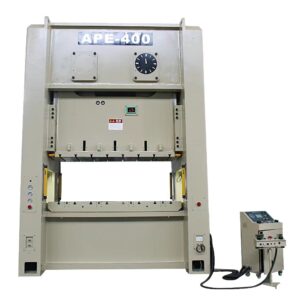In the ever-evolving landscape of factory industry, the demand for exactness and effectiveness continues to rise. Metal forming machinery stands at the leading position of these progress, enabling manufacturers to change basic materials into premium components with exceptional exactness. As industries push the limits of innovation, the role of innovative metal forming techniques becomes more and more crucial, not only for enhancing productivity but also for ensuring the quality and functionality of items.
With the integration of advanced automation and digital technologies, modern metal forming machines offers features that were formerly regarded as trailblazing. From imprinting and bending to casting and spreading, these machines harness force and exactness, addressing a wide range of uses across various fields. As we examine the newest advancements in this field, it becomes obvious that the synergy between exactness and strength is defining the future of production, allowing companies to meet the demands of an progressively challenging marketplace.
Groundbreaking Approaches in Metals Fabrication
The landscape of metal forming technology has seen significant advancements in recent years, greatly improving the efficiency and exactness of manufacturing processes. One of the most advanced methods is the incorporation of computer numerical control (CNC) technology, which facilitate for exact manipulation of equipment with reduced human mistakes. This technological advancement enables manufacturers to produce complex shapes and designs that were once challenging or impossible to achieve using conventional methods. As a consequence, the production process is streamlined, and the general quality of metal parts is boosted.

Another noteworthy development is the rise of 3D printing in metal forming. This technique, often termed to as 3D metallic printing, permits companies to manufacture detailed components in layers, offering unprecedented design freedom. It is notably helpful for producing light structures that maintain strength, making it a popular selection in aerospace and transport industries. The ability to customize products on order lowers material waste and facilitates for swift prototyping, which hastens the development of new designs and applications.
Finally, developments in robot technology and automation have changed the metal forming sector. Automated systems can now execute repetitive tasks with quickness and accuracy, allowing skilled operators to dedicate on more challenging issues that require human judgment. These mechanical technologies not only increase productivity but also boost safety by minimizing the risk of accidents in manufacturing environments. As these cutting-edge methods continue to develop, they set the stage for a more productive and sustainable future in metal forming machinery.
Main Methods Boosting Efficiency
Advancements in automation and robotic technology have considerably improved the efficiency of metal forming machinery. By integrating automated arms and intelligent systems, manufacturers can obtain accurate positioning and high-speed operations. These technologies not only reduce cycle times but also minimize operator mistakes, leading to reliable quality and lessened waste. As a consequence, production lines can operate at peak capacities, reacting swiftly to market demands while maintaining elevated standards.
A further crucial factor in enhancing efficiency is the development of computer numerical control systems. CNC technology allows for accurate programming and control of metal forming processes, significantly boosting the precision of operations. This level of control enables manufacturers to generate complex geometries with ease, lowering the need for hand adjustments and inspections. Furthermore, advancements in programs have streamlined to simulate and enhance the metal forming process, allowing for better strategy and asset allocation.
Power efficiency is also a critical aspect of modern metal forming technologies. Innovations in fluid and mechanical systems have resulted in machines that consume reduced energy while delivering improved performance. Features such as speed control systems and energy recovery systems contribute to lower operating costs and lessened environmental impact. As sectors more and more focus on eco-friendliness, these eco-friendly machines play a key role in aligning production practices with eco-friendly initiatives.
Future Trends in Metal Forming Machinery
A future of metal forming machinery is set to embrace greater automation and intelligent technology integration. As sectors strive for increased efficiency and precision, manufacturers are increasingly incorporating automated systems and advanced sensors into their machineries. Such technologies allow for immediate monitoring and adjustments during the forming process, significantly reducing wastage and ensuring uniform quality. Furthermore, the rise of Industry 4.0 is driving the adoption of connected machinery that can interact with other machines and systems, enabling seamless workflow and data-driven decision-making.
Sustainability is becoming a significant focus in the advancement of metal forming machinery. As environmental concerns rise, manufacturers are innovating to create machines that use less energy and generate minimized waste. This includes the implementation of eco-friendly materials in machine construction and the development of processes that minimize scraps and emissions. Additionally, advances in recycling technologies are allowing companies to reprocess scrap metal effectively, further enhancing sustainability in the metal forming sector.
Lastly, the adaptability of metal forming machinery will be a defining trend in the coming years. As demand for tailored and small-batch production increases, manufacturers are designing machines that can easily transition between various operations and materials. This flexibility enables businesses to respond swiftly to market changes, producing a range of components without significant downtime. The constant evolution of technology will further enhance these capabilities, ensuring that metal forming machinery remains a vital component in the manufacturing landscape.
